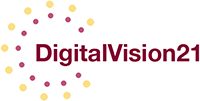One of the key trends this Google executive discusses is the idea that ’embedded finance’ (the inclusion of traditional banking services in non-financial apps) will begin to become much more prevalent. Another concept is that consumers are increasingly moving from a ‘DIY’ to a ‘DIFM’ (do it for me) mindset as they increasingly expect proactive and automated solutions to their financial needs.
View article
In early 2020 BBVA announced a major initiative to help customers improve their financial wellness. That included the development of an extensive repository of information related to financial education and skills development, along with the leveraging of data to deliver highly personalized recommendations at the individual customer level. Their program has already shown impressive results in terms of adoption rates and improvements in customer satisfaction metrics.
View article
Financial institutions need to move beyond just offering basic functionality in their mobile apps. Some of the features customers would like to see include lists of recurring charges, ability to view credit scores, in-app canceling of subscription services, automated transfers to savings based on cash flow predictions, viewing balances and transactions at other institutions, ability to see projected account balances, and the ability to set daily spending limits. The bar keeps getting raised . . .
View article
The term ‘checking account’ is rapidly becoming irrelevant in a world where fewer and fewer people actually write paper checks. This account should be re-imaged in terms of how it is used by many people today – as a digital ‘hub’ account with funds moving in and out through digital channels to meet the customers’ various needs. This basic functionality will continue to be important, with the focus moving more to the number and ease of use of the other ‘spokes’ leading from the hub to other accounts and services. And a key to retention is being the account to which the customer direct-deposits their paycheck.
View article
Digital transformation typically requires a change in internal culture to one focused on challenging existing ways of doing business and a willingness to try new things. If a company is only willing to take on projects that they are sure will be successful, then they really aren’t innovating. Innovation requires the ability to distinguish ‘learning’ from ‘failure’. Innovation also needs to be encouraged from the top-down, and from the bottom-up.
View article
The Fintech Accrue is launching a reverse of the popular BNPL plans. Under their approach, the customer creates structured savings plan to save for the purchase of a specific item. Once they reach their goal they get a preloaded debit card to make their purchase. This is an interesting concept, but just about any bank or credit union should be able to quickly mirror this product.
View article
Pressure continues to increase from both competitive and regulatory fronts for banks and credit unions to modify their overdraft policies. One approach to this that will increase customer satisfaction and enhance relationships is to use data analytics to model future customer cash flows and identify potential shortfalls. This information can be used to proactively offer customers solutions in advance of the problem.
View article
Customer demand for real-time payments is rising. In addition to the decision on what payments rails your company might choose to pursue, there are also back-office implications in liquidity management and fraud prevention that need to be considered.
View article
H&R Block already has over 21 million customers using their tax preparation offices or DIY software. They are well-positioned to expand relationships with those customers through their ‘Spruce’ mobile banking platform.
View article
There’s a lot of terminology being used these days related to digital banking that may not be well understood. This article aims to demystify 9 of them, including BaaS, BNPL, cryptocurrency, decentralized finance, digital transformation, embedded finance, embedded fintech, financial health, and platform banking. It also has a link to a joint Cornerstone/Nymbus report that defines many additional terms.
View article
